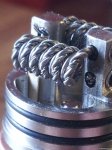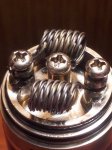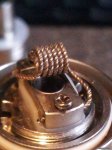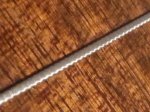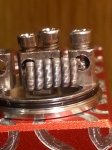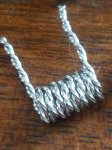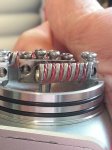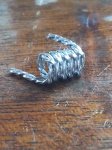Well, sort of.
One of my favorite coils is a parallel 24/28g round kanthal with a 2.4 or 2.5mm ID, usually 8 or 9 wraps with the 24g and one less with the 28. Depending on the wraps I've done it as a single and a dual both.
Last night, I tried doing essentially the same thing with 22g and 28g. I fired at lower power than I'd use it just to get it glowing and worked out the kinks. As I started pushing the voltage, first it looked awesome and then it suddenly shorted.
I'm not an inexperienced builder or new vaper. I should have taken a picture but everything looked fine. It was actually glowing beautifully until the short happened. I really can't even imagine what occurred unless the resistances of those gauges of wire are simply too far apart, but I'm sure there are other possibilities. I did not think I was running it at a wattage that was unrealistic for the 28g. I use ceramic tweezers and don't manipulate while firing, anyway.
I realize without photos etc. it's only best guess, but maybe I'm just missing something.

couldn't resist. just watched that episode with my partner and he said "hey, that's kind of like you and a bad coil." I've taught him well.
One of my favorite coils is a parallel 24/28g round kanthal with a 2.4 or 2.5mm ID, usually 8 or 9 wraps with the 24g and one less with the 28. Depending on the wraps I've done it as a single and a dual both.
Last night, I tried doing essentially the same thing with 22g and 28g. I fired at lower power than I'd use it just to get it glowing and worked out the kinks. As I started pushing the voltage, first it looked awesome and then it suddenly shorted.
I'm not an inexperienced builder or new vaper. I should have taken a picture but everything looked fine. It was actually glowing beautifully until the short happened. I really can't even imagine what occurred unless the resistances of those gauges of wire are simply too far apart, but I'm sure there are other possibilities. I did not think I was running it at a wattage that was unrealistic for the 28g. I use ceramic tweezers and don't manipulate while firing, anyway.
I realize without photos etc. it's only best guess, but maybe I'm just missing something.

couldn't resist. just watched that episode with my partner and he said "hey, that's kind of like you and a bad coil." I've taught him well.
Last edited:

